Matcha Swiss Roll
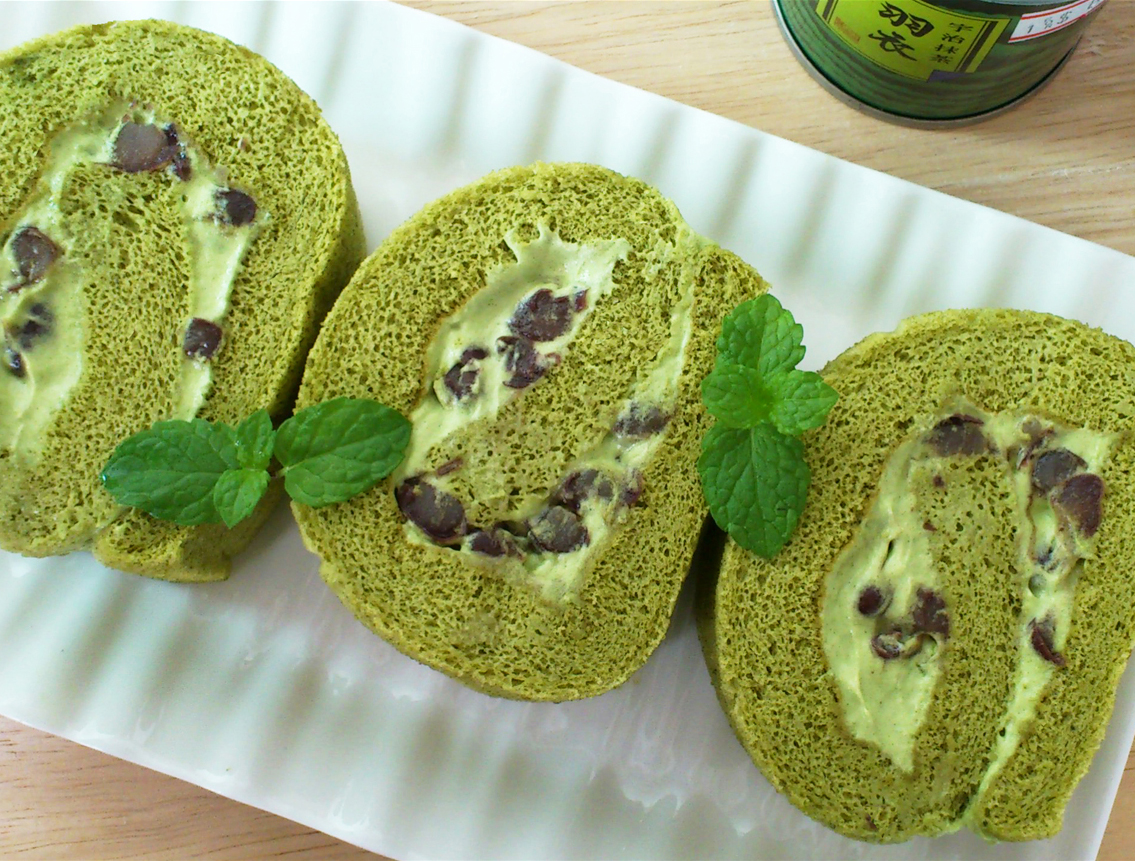
Baking matcha sheet cake is different from vanilla and chocolate sheet cake.
When I bake matcha sheet cake, I block the oven’s bottom heat around two-thirds of the way.
Why?
To keep the inside of the cake moist whilst allowing the crust to dry out sufficiently. Without blocking the bottom heat, the crust would be sticky when the inside is just right. And if the bottom heat is blocked too early, the bottom of the cake would stick to the parchment paper.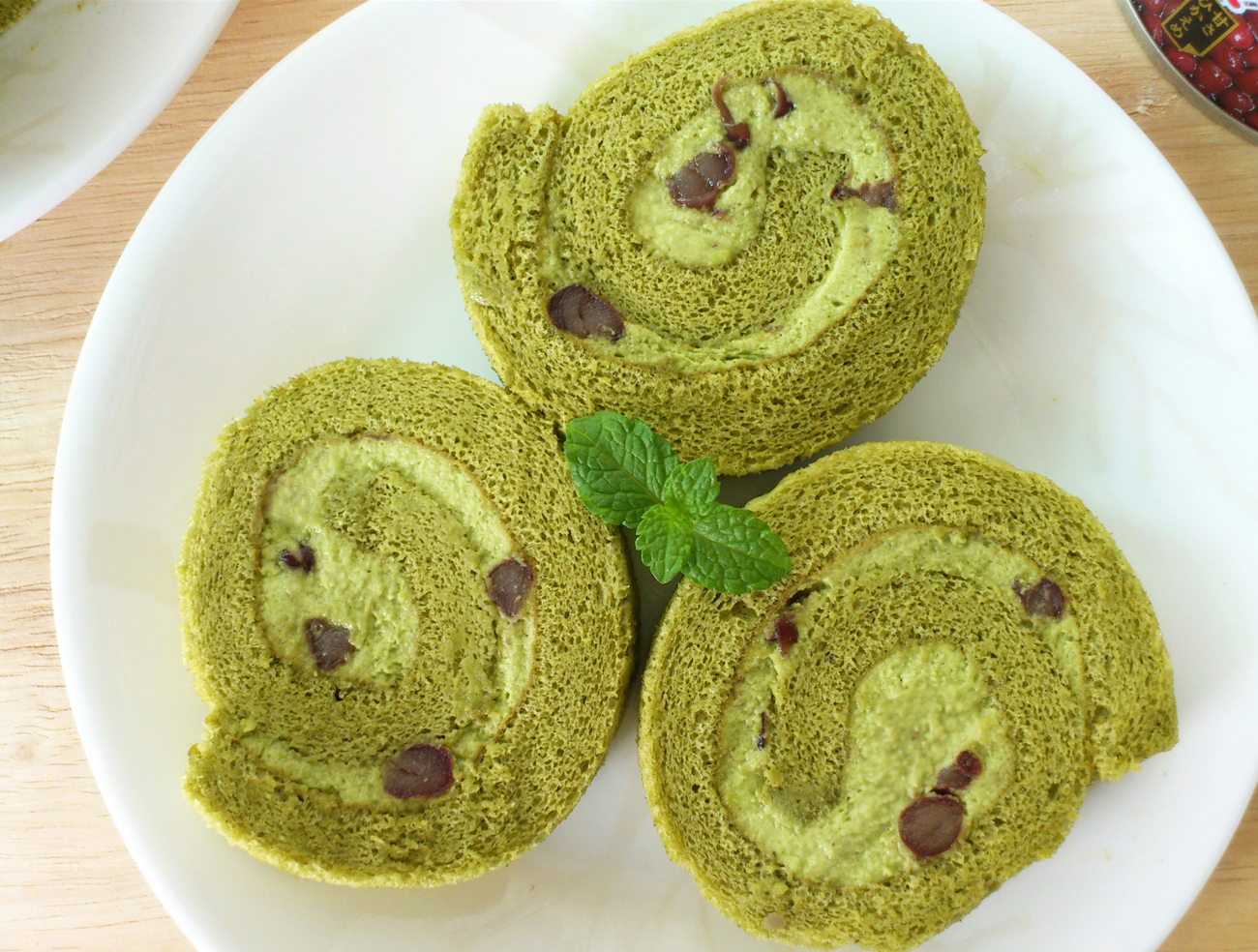
What makes the crust dry out slowly?
Matcha. Some of the fine powder rises to the top of the cake when heated. Do wet leaves dry well in the oven? No, not as well as flour which has starch to help it set. That’s why the crust needs the tray’s help.
My matcha sheet cake doesn’t have much sugar, so it’s barely sweet. It reminds me of matcha tea which is usually drunk without sugar. It doesn’t have much oil either because matcha doesn’t absorb much. My vanilla sheet cake, in comparison, has twice as much oil.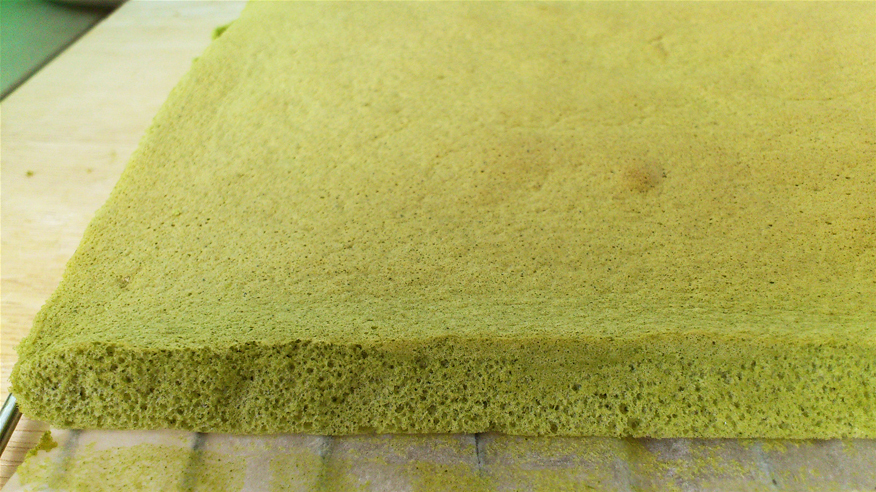
Green tea powder helps “lighten” the cake. You know how tea makes food seem less rich? Matcha does that with cake.
If you don’t know much about matcha, please read my post on matcha layer cake. You’ll find information on what type of matcha to buy and how to store it.
I like to fill my matcha roll with matcha whipped cream and red beans. You can, of course, make sweetened red beans from scratch. But chances are your homemade version won’t be as fragrant as Japanese canned red beans unless your beans are from Hokkaido. Chinese red beans are far inferior.
I’ve tried two brands of red beans: Hashimoto and Imuraya. Both are fragrant but I prefer Hashimoto. It has more bite and is less sweet.
Imuraya beans are mushy and the syrup, because it’s thickened with cornstarch, is very gloopy. The gloop clings to the beans, adding to the sweetness and mushiness. Unlike Imuraya, Hashimoto is thickened with sorbitol. The syrup isn’t as thick at room temperature, so I can drain it.
One small can of Hashimoto, 190 g, yields 130 g after it’s drained. Leftovers may be refrigerated for a few weeks or frozen for a few months.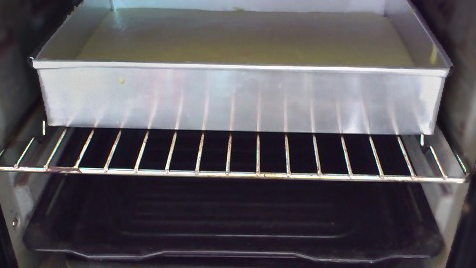
I like my matcha roll “naked”, i.e. it’s rolled inside out and there’s no icing. I think the green, spongy look is quite pretty. Is rolling the cake difficult? Not at all. The cake handles well (provided it’s made right). If you don’t know much about rolling Swiss rolls, please read my post on vanilla Swiss roll.
After you make the Swiss roll, have a small piece to see what it’s like. Take note of the taste and remember it. Keep the rest of the roll in the fridge, covered, for two days.
Your saintly patience will be rewarded with a matcha and red bean flavour that’s more intense and well-rounded than two days prior. After taking a bite, you’ll never again eat matcha Swiss roll that’s freshly made . . . or store-bought.
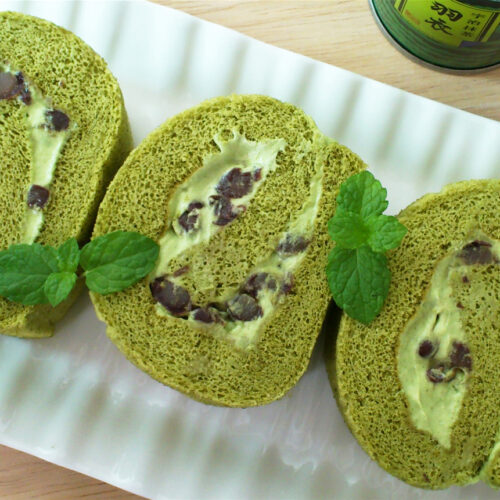
Matcha Swiss Roll
Video
Ingredients
Cake
- soft butter for greasing pan
- 10 g very hot water
- 1/2 tbsp green tea powder
- 30 g egg yolks
- 10 g castor sugar
- 15 g corn oil
- 15 g cake flour
- 70 g egg whites
- 1/16 tsp cream of tartar
- 20 g castor sugar
Filling
- 75 g fresh dairy cream ≈35% fat
- 1/2 tsp green tea powder
- 40 g Hashimoto brand red beans drain for 30 minutes
Instructions
- To make cake, preheat oven to 200°C. Grease 10″ x 7″ cake pan with butter. Line with 14″ x 7″ parchment paper, making sure paper has no air pockets or creases. (Use 13″ x 10″ pan if recipe is doubled.)soft butter for greasing pan
- Measure and prep ingredients as detailed above.
- Add water to green tea powder. Stir till smooth. Cover. Set aside.10 g very hot water, 1/2 tbsp green tea powder
- Whisk egg yolks with 10 g castor sugar till thick and pale. Add corn oil. Whisk till thick. Add green tea paste. Mix till even. Sift cake flour into mixture in 2 batches. Mix till just even after each batch.30 g egg yolks, 10 g castor sugar, 15 g corn oil, 15 g cake flour
- Whisk egg whites on medium-low speed till very frothy. Add cream of tartar. Whisk till thick foam forms. Gradually add 20 g castor sugar whilst continuing to whisk. Reduce speed to low. Keep whisking till firm, hooked peak stage.70 g egg whites, 1/16 tsp cream of tartar, 20 g castor sugar
- Loosen egg yolk mixture from bottom of bowl. Add egg whites in 2 batches. Mix with whisk till almost even after each batch. Scrape down and fold with spatula till just evenly mixed, banging bowl against worktop 2-3 times.
- Scrape batter into cake pan, slowly and from 1' high. Spread as evenly as possible. Jiggle vigorously till batter is level, banging cake pan against worktop 2-3 times.
- Bake cake on middle shelf of oven till risen, about 9 minutes (10 minutes if recipe is doubled). Place baking tray in bottom of oven. Continue baking till crust is lightly brown and middle of cake doesn’t make squishing sound when pressed, 4-5 minutes (5-6 minutes if recipe is doubled), checking once every 30-45 seconds towards the end.
- Remove pan from oven. Drop from 1′ high 2-3 times. Loosen cake with knife. Drag onto wire rack. Leave till cold. Remove from wire rack. Place new parchment paper on cake. Flip cake upside down. Peel old parchment paper from cake, slowly. Flip again.
- To make filling, whip cream till thick enough to hold its shape. Add green tea powder. Whisk till thick enough to stick to whisk.75 g fresh dairy cream, 1/2 tsp green tea powder
- To assemble Swiss roll, spread cake with whipped cream, then red beans. Roll. Refrigerate for 2 days, covered. Remove from fridge. Cut with serrated knife, wiping knife clean after each cut. Tuck in when cake is soft but filling is still firm.40 g Hashimoto brand red beans